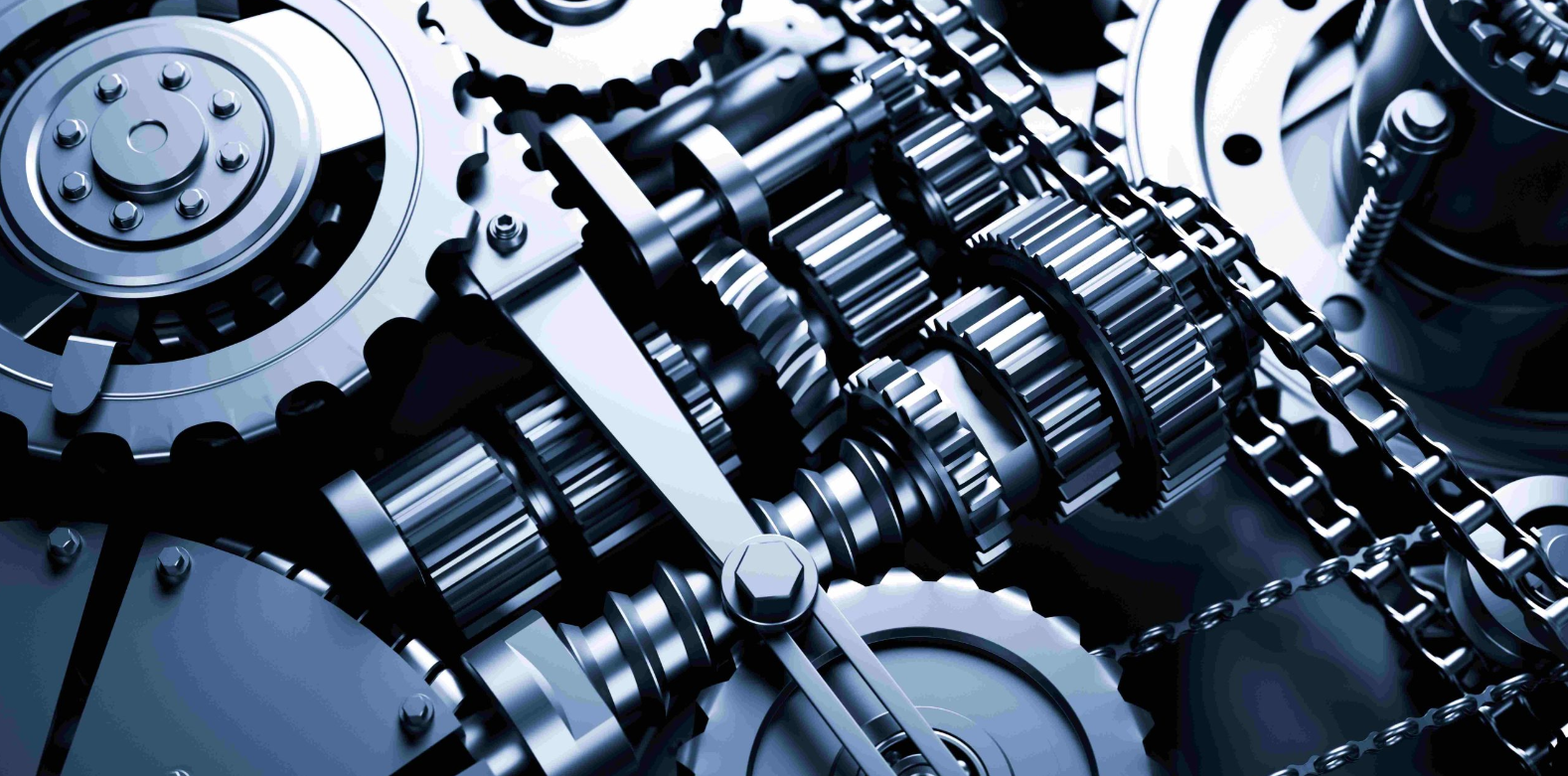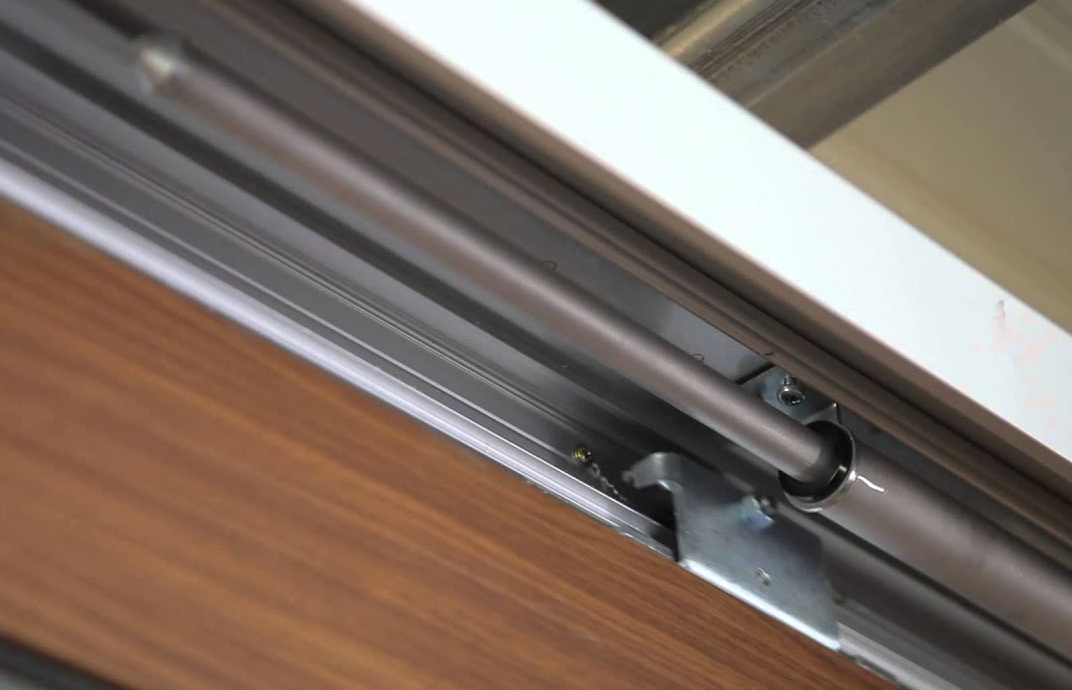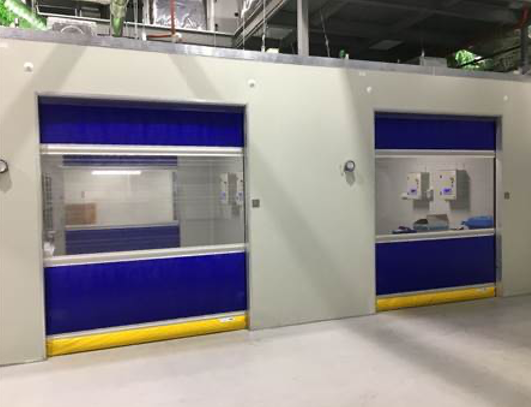Automatic doors use various technologies like electric motors, sensors such as infrared or microwave, and different power supplies like batteries or solar panels.
Basic Principles
The basic principles behind automatic doors involve a combination of mechanical and electronic elements that make the door function automatically. These doors utilize sensors and triggers that detect an object or person, sending a signal to a controller which then actuates the door’s opening or closing mechanism.

Mechanisms of Automatic Doors
Automatic doors are marvels of engineering that rely on a blend of hardware and software to function seamlessly. The heart of the operation lies in the motor, which receives commands to move the door. Gears, pulleys, and sometimes hydraulic systems help in the actual movement of the door panels.
Motor Systems: At the core, electric motors generate the power needed to slide, swing, or revolve the door. This is commonly an AC or DC motor, depending on the design and requirements.
Controllers: These are the brains of the operation. Controllers receive signals from the sensors and send commands to the motor. They are programmed to ensure smooth operation and safety features, such as obstacle detection and emergency shutdown.
Mechanical Parts: These include rails, wheels, and other elements that help move the door. The complexity of these parts can vary based on the type of door (e.g., sliding vs. revolving).
Software: Sophisticated doors may come with software for configuration, maintenance alerts, and more. Some are even compatible with building management systems.
Types of Sensors Used
Sensors play a crucial role in the operation of automatic doors. They detect the presence of people or objects and trigger the opening or closing of the door. Below are the most commonly used sensors.
Infrared Sensors: These sensors use infrared light to detect heat and motion. They are commonly used due to their reliability and low cost. For more information, you can visit the Wikipedia page on Infrared Sensors.
Microwave Sensors: Employing microwaves, these sensors detect movement by bouncing microwave pulses off objects and analyzing the reflected waves. They are known for their long-range capabilities.
Ultrasonic Sensors: Using sound waves, ultrasonic sensors can detect movement and distance. They are often used in combination with other types of sensors for added accuracy.
Pressure Mats: Located at the foot of the door, these mats sense weight and send a signal to the door to open or close.
Laser Scanners: These use laser beams to map the area in front of the door. When an object interrupts the laser, the scanner sends a signal to open the door.
Types of Automatic Doors
Automatic doors come in various designs and operational modes, each serving unique purposes and architectural needs. Whether you are at an airport, shopping mall, or a high-end office building, chances are you’ve encountered one or more types of these convenient and sophisticated entry systems. Below we delve into the different types of automatic doors, their mechanisms, and common applications.
Sliding Doors
Sliding doors are a staple in many commercial buildings. They often consist of two door panels that slide horizontally. One panel remains stationary while the other moves, although some designs feature both panels in motion.
Mechanism: A motor connected to a belt drives the sliding motion. Sensors detect approaching individuals and trigger the opening sequence.
Applications: You’ll commonly see these doors at airports, shopping malls, and offices. They are especially convenient in high-traffic areas.
Advantages: Sliding doors are space-efficient and easy to operate, making them highly popular.
Notable Feature: Some modern sliding doors include “breakout” features, allowing the doors to swing out in emergency situations.
For more details, you can visit the Wikipedia page on Sliding Doors.
Swinging Doors
Unlike their sliding counterparts, swinging doors pivot on hinges and swing inwards or outwards.
Mechanism: An electric motor or a hydraulic pump actuates the door. Sensors or push buttons usually initiate the motion.
Applications: You can often find swinging doors in restaurants and offices where space is not a major constraint.
Advantages: Swinging doors can offer quicker entry and exit, but they require more space.
Notable Feature: Some swinging doors are designed to open both ways, providing added convenience.
Revolving Doors
Revolving doors typically consist of three or four panels that rotate around a central axis. They offer a stylish entrance that can also be energy-efficient.
Mechanism: A motor initiates the rotation, often regulated by sensors or push-buttons.
Applications: You’ll find these in hotels, malls, and skyscrapers. They’re also a favorite for buildings focused on thermal efficiency.
Advantages: Revolving doors regulate air flow, effectively maintaining indoor temperatures.
Notable Feature: Some models come with a “collapse” function that allows the door panels to fold, creating a larger opening for emergency exits.
For more insights, the Wikipedia page on Revolving Doors provides extensive information.
Folding Doors
Folding doors, also known as accordion doors, fold upon themselves when opening.
Mechanism: A motor pulls the door panels along a track, causing them to fold against each other.
Applications: These are often used in homes as patio doors, but they can also be found in some commercial settings like conference rooms.
Advantages: Folding doors offer a wide opening and are ideal for spaces where side room is limited.
Notable Feature: The folding mechanism allows for more artistic and aesthetic designs compared to other door types.
Sensors and Triggers
The ability of an automatic door to open and close on its own primarily rests on its sensors and triggers. These components detect people or objects in the vicinity and signal the door to take appropriate action. There’s a wide range of sensor technologies that vary in complexity, accuracy, and cost. Below, we dive into the different types of sensors and triggers used in automatic doors.
Infrared Sensors
Infrared sensors utilize infrared light waves to detect heat and motion. They are one of the most commonly employed sensors in the industry, primarily because they are reliable and relatively inexpensive.
Mechanism: Infrared sensors send out infrared waves and measure the heat radiating from objects in their field of vision. When a person approaches, their body heat triggers the sensor.
Applications: Commonly used in residential, commercial, and public facilities, especially where cost-effectiveness is a priority.
Advantages: These sensors are reliable, inexpensive, and require minimal maintenance.
For a more scientific explanation, visit the Wikipedia page on Passive Infrared Sensors.
Microwave Sensors
Microwave sensors emit microwave pulses and analyze the reflected waves to detect movement, making them well-suited for long-range detection.
Mechanism: These sensors send out microwave pulses that bounce off objects and return to the sensor. Any change in the reflection triggers the door to open or close.
Applications: Ideal for industrial settings or secure areas where the range of detection is crucial.
Advantages: They offer long-range capabilities and high sensitivity but are generally more expensive than infrared sensors.

Ultrasonic Sensors
Ultrasonic sensors use sound waves to detect objects, and they can also measure the distance between the sensor and the object.
Mechanism: The sensor emits ultrasonic waves, and when these waves hit an object, they bounce back to the sensor. The time it takes for the echo to return is proportional to the distance.
Applications: Common in parking lots and some retail settings, as well as in medical facilities.
Advantages: These sensors are highly accurate and can work in various environmental conditions.
For further reading, the Wikipedia page on Ultrasonic Sensors provides additional insights.
Pressure Mats
Pressure mats are essentially large switches that activate when someone steps on them.
Mechanism: These mats contain pressure-sensitive switches. When someone steps on the mat, the pressure activates the switch, triggering the door to open.
Applications: Often used in secure facilities or specialized industrial settings.
Advantages: They are highly reliable and best for controlled environments where the area of activation is restricted.
Laser Scanners
Laser scanners use laser beams to map the area in front of the door, providing highly accurate detection capabilities.
Mechanism: The scanner emits laser beams and measures the time it takes for the beams to bounce back after hitting an object.
Applications: Commonly found in high-end and high-security areas where precision is required.
Advantages: These sensors offer high accuracy and can even detect the direction in which an object is moving.
Power Supply and Motors
The functioning of automatic doors depends largely on their power supply and the motors that convert this energy into motion. With technological advancements, there are now various options for powering automatic doors, each with their own benefits and limitations. Here, we explore the different types of power supply and motors used in automatic doors.
Electric Motors
Electric motors serve as the backbone for most automatic door systems. They convert electrical energy into mechanical energy to move the door panels.
Mechanism: Electric motors typically work in conjunction with a gear and pulley system. When the sensors trigger the door to open, the motor receives the signal and starts turning the gears.
Applications: Electric motors are used widely across all types of automatic doors, including sliding, swinging, revolving, and folding doors.
Advantages: They offer reliable performance, require less maintenance, and are relatively easy to install.
For a deep dive into how electric motors work, the Wikipedia page on Electric Motors is a useful resource.

Battery Backup
Battery backups are essential for ensuring that automatic doors continue to function even during power outages.
Mechanism: In case of a power failure, the battery backup automatically kicks in to power the door’s operation.
Applications: Ideal for essential facilities like hospitals and emergency exits where constant operation is crucial.
Advantages: Provides a seamless transition during power outages, ensuring uninterrupted service.
Solar-Powered Options
With increasing focus on sustainability, solar-powered automatic doors are gaining popularity.
Mechanism: Solar panels collect sunlight and convert it into electricity, which then powers the door motors. Excess energy is often stored in a battery for later use.
Applications: Best suited for outdoor settings or buildings with ample sunlight. They are becoming more popular in green building projects.
Advantages: These doors reduce electricity consumption and have a lower carbon footprint.
For more information on solar power, the Wikipedia page on Solar Energy offers an exhaustive explanation.
